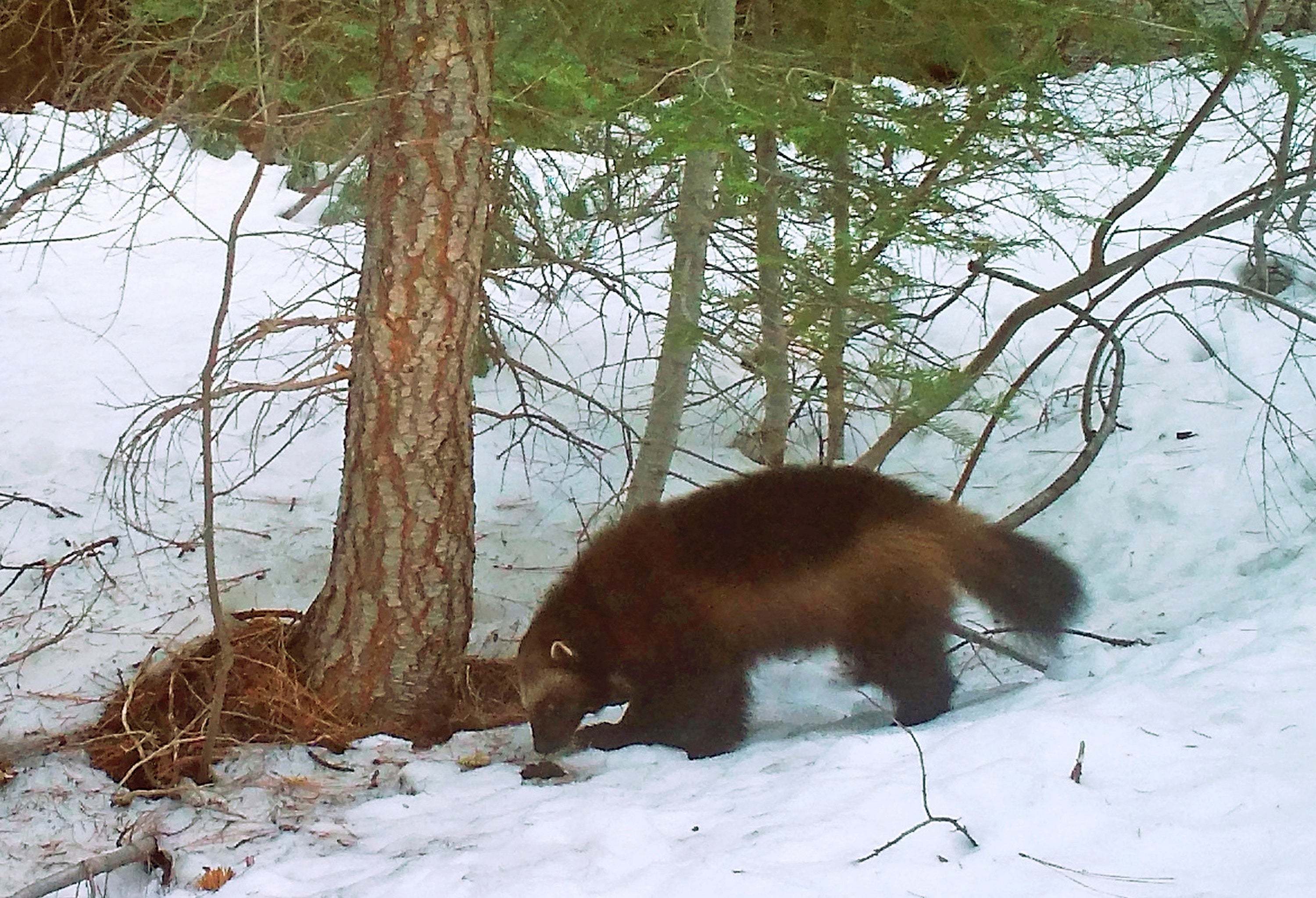US officials: Climate change not a threat to rare wolverine
U.S. wildlife officials are withdrawing proposed protections for the snow-loving wolverine

Your support helps us to tell the story
From reproductive rights to climate change to Big Tech, The Independent is on the ground when the story is developing. Whether it's investigating the financials of Elon Musk's pro-Trump PAC or producing our latest documentary, 'The A Word', which shines a light on the American women fighting for reproductive rights, we know how important it is to parse out the facts from the messaging.
At such a critical moment in US history, we need reporters on the ground. Your donation allows us to keep sending journalists to speak to both sides of the story.
The Independent is trusted by Americans across the entire political spectrum. And unlike many other quality news outlets, we choose not to lock Americans out of our reporting and analysis with paywalls. We believe quality journalism should be available to everyone, paid for by those who can afford it.
Your support makes all the difference.U.S. wildlife officials are withdrawing proposed protections for the snow-loving wolverine after determining the rare and elusive predator is not as threatened by climate change as once thought.
Details on the decision were obtained in advance by The Associated Press and expected to be announced formally on Thursday.
A federal judge four years ago had blocked an attempt to withdraw protections that were first proposed in 2010, pointing to evidence from government scientists that wolverines were “squarely in the path of climate change "
But years of additional research suggest the animals' prevalence is expanding, not contracting, U.S. Fish and Wildlife officials said. And they predict that enough snow will persist at high elevations for wolverines to den in mountain snowfields each spring despite warming temperatures.
Wildlife advocates said they are likely to challenge the move in court.
“They are putting the wolverine on the path to extinction," said Andrea Zaccardi with the Center for Biological Diversity.
Wolverines also known as “mountain devils,” were wiped out across most of the U.S. by the 1930s following unregulated trapping and poisoning campaigns. They're slowly clawing their way back in some areas, said Justin Shoemaker, a biologist with the Fish and Wildlife Service.
Government biologists no longer consider the relatively few wolverines in the Lower 48 states to be an isolated population, instead saying they are linked to a much larger population in Canada
“Wolverines have come back down from Canada and they are repopulating these areas in the Lower 48 that they historically occupied," Shoemaker said. “There’s going to be significant areas of snow pack in the spring at the time they would need it and the levels they would need it."
Wildlife officials have previously estimated that 250 to 300 wolverines survive in remote areas of Montana, Wyoming, Idaho and Washington state. The animals in recent years also have been documented in California, Utah, Colorado and Oregon.
A newly released government assessment of the species status does not provide an updated population estimate.
The animals need immense expanses of wild land to survive, with home ranges for adult male wolverines covering as much as 610 square miles (1,580 square kilometers), according to a study in central Idaho.
Wildlife advocates have sought since the early 1990s to protect the animals and alleged political meddling in the government's decision-making process thwarted those efforts. Tim Preso with the environmental law firm Earthjustice said the latest decision fits in with a pattern of the Trump administration downplaying the threat of climate change.
Agency officials rejected the notion of any interference in their scientific deliberations.
“This was an analysis that was done by the scientists in the field looking at the best available information,” said Jodi Bush, Montana project leader for the Fish and Wildlife Service.
___
Follow Matthew Brown on Twitter: @MatthewBrownAP